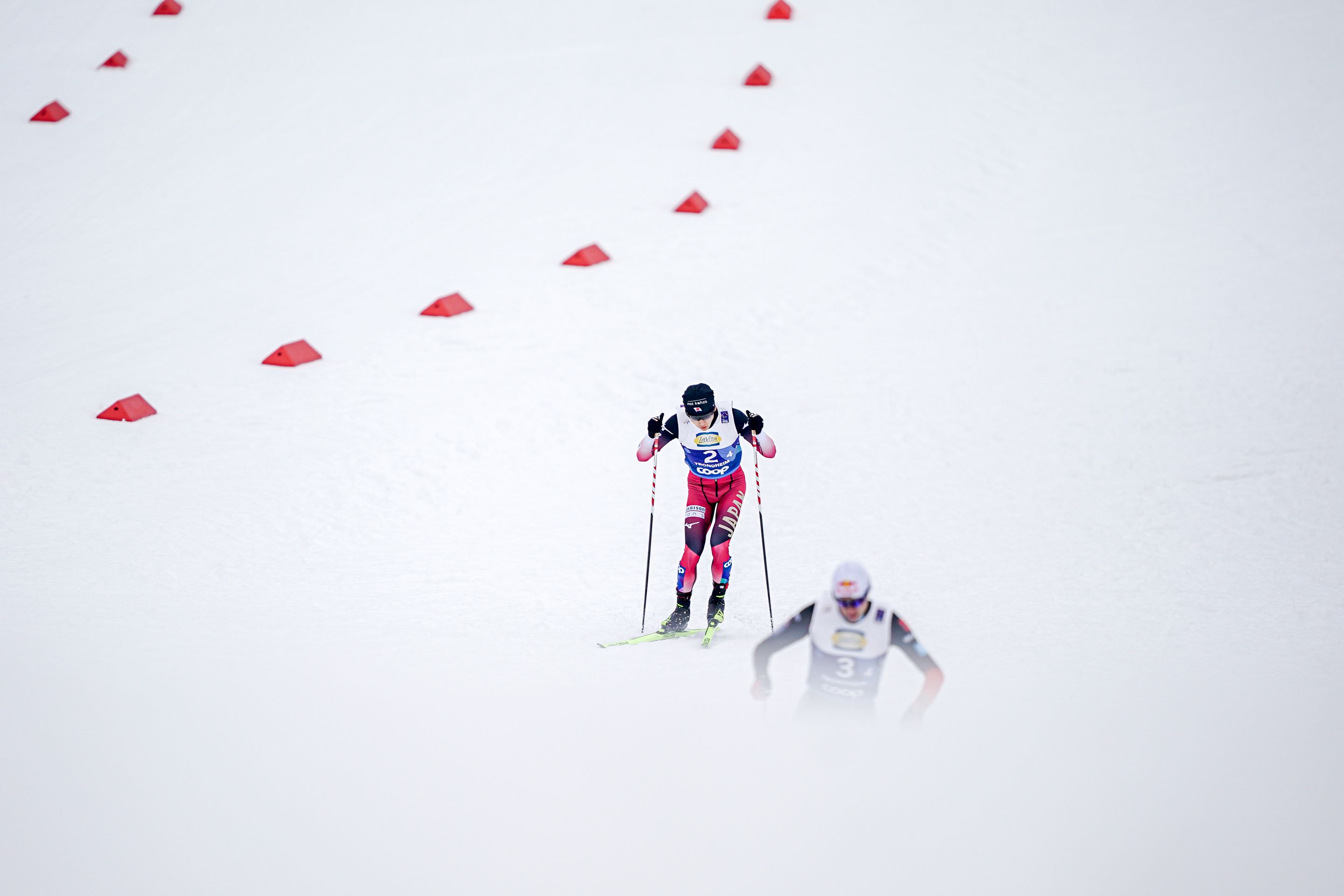Nordic Combined Committee confirms Individual Compact format for first Ski Flying World Cup event, and equal overall prize money for women and men
May 09, 2025·Nordic Combined
A number of decisions were taken at the Nordic Combined Committee meeting in Vilamoura (POR) on May 8 2025, subject to ratification by the FIS Council on June 12.
The calendar for next season’s FIS World Cup was presented with the first men’s Ski Flying World Cup event scheduled for Kulm (AUT). It will be staged in the Individual Compact format, and is scheduled to be the first competition after the Milano-Cortina Olympic Winter Games on February 27 2026.
The discipline is taking further steps towards gender equality with women competing in Lahti (FIN) for the first time. Lahti will stage two of six LH (Large Hill) events for the women on the World Cup calendar following last season’s successful test event in Oslo (NOR), which was an exception to the rules specifiying NH (Normal Hill) as the maximum hill size. These rules now state LH as the maximum hill size.
The Oslo double-header remains as the season finale with the first two LH women’s competitions of the year pencilled in for Lake Placid (USA), pending final confirmation from U.S. Ski & Snowboard. This would mark a long-awaited World Cup return to the United States, as well as the first ever NoCo World Cup at the famed New York state resort.
In another advance for equality, overall prize money has been levelled up with men and women both earning a total of 1,500 CHF per event. Previously, the men received 2,000 CHF and the women 1,000 CHF. Prize money for the men will now be awarded to just the top three, in line with the women, instead of the first six finishers as before.
Following on from the move to equalize the number of NoCo medal events for men and women at the 2027 Nordic World Ski Championships, these changes - with the women having 18 World Cup events compared to the men’s 22 - will help further narrow the gender gap as FIS bids for the inclusion of women’s NoCo at the 2030 Olympic Winter Games.
"I’m very pleased with the outcome of the committee meeting,” revealed Nordic Combined Race Director Lasse Ottesen. “With an Olympic season ahead, major changes are rare but this year we’ve made significant progress. One of the biggest achievements is the introduction of equal overall prize money for women and men.
“We’ve also secured an almost complete Continental Cup calendar and a strong World Cup calendar, featuring highlights like the Ski Flying premiere in Kulm. With the inclusion of Lahti, we’re now offering an almost equal calendar for both genders, which is another important step toward true equality in our sport.
“We’re also looking forward to continued dialogue and are hopeful for a positive decision regarding the World Cup events in Lake Placid. Bringing the USA back onto the calendar would be a major milestone for Nordic Combined, allowing us to connect with an audience that has shown remarkable digital support and engagement.”
Nordic Combined Committee Chairwoman Jacqueline Stark added, “The exchange with all nations and experts is incredibly valuable and opens up new opportunities and perspectives for us to continue developing the sport together as one Nordic family."
Among the other changes is the introduction of new rules concerning obstruction and overtaking in the Cross-Country element. This was prompted by the end of the Mixed Team race at the Trondheim 2025 Nordic World Ski Championships where Austria’s Johannes Lamparter changed lanes and impeded Ryota Yamamoto of Japan in the sprint for bronze. The jury took over an hour to decide to dismiss Japan’s appeal in the absence of clearer rules.

Following committee discussions after what Ottesen called “a good learning experience for everyone”, the new rules give the lead skier more responsibility to ensure fair overtaking maneuvers. Previously, the onus was solely on the trailing athlete. More generally, any obstruction - be that blocking, charging or pushing - is prohibited with violations potentially leading to disqualification.
At the Ski Jumping Committee meeting, Race Director Sandro Pertile outlined the initial stages of work being conducted to strengthen equipment control. A longer-term project has also commenced to investigate the potential of more fundamental changes to the regulation and control of Ski Jumping equipment, especially suits, in the wake of controversies at Trondheim 2025.
Ottesen is leading the research initiative which is scheduled to present preliminary findings at September’s FIS Fall Meetings in Zurich (SUI). In Nordic Combined, athletes will be permitted to wear a maximum of three competition suits - marked by microchips to ensure no more are used - during the season.

)
)
)
